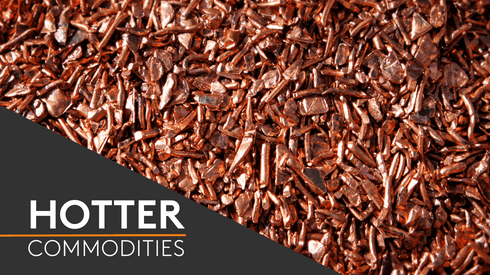Here, Metal Bulletin deputy editor Fleur Ritzema looks back at just some of the key stories from the past week.
News was coming in thick and fast from major copper event CESCO, which took place in Chile this week. The head of copper at Anglo American told Andrea Hotter at the conference that Chinese hedge funds will continue to drive volatility in the copper market for at least the next two years.
Hennie Faul acknowledged the dramatic influence on prices that Chinese hedge funds have had on copper over the past six to twelve months, and said that it has become even more important for producers to be low-cost and agile.
Faul also told Metal Bulletin that the process to sell a number of Anglo American’s copper assets in Chile is under way.
Meanwhile, the ceo of German copper producer Aurubis said the company is continuing to focus on treating complex concentrates and is adapting technologies for this purpose.
This allows the company to achieve a higher revenue stream, Bernd Drouven told Metal Bulletin in an interview at the conference.
And according to Chile’s state-owned Codelco, demand for copper is ‘permanently guaranteed’, despite slower economic growth in China. Codelco ceo Nelson Pizarro also expects prices to increase as the market turns into a possible supply deficit by 2018. Danielle Assalve had the story.
There was more talk of the copper supply/demand balance. The ceo of Antofagasta told Metal Bulletin that expectations for a copper market surplus this year have been trimmed significantly in the past few months, amid a host of issues with existing and forthcoming projects.
But according to the senior vp of metals at Luvata, the copper market is amply supplied, despite some issues constricting supply, and looks likely to remain so in the short-to-medium term.
Hotter explains that industry players at the conference ended the week resigned to the fact that, while the vast metal surplus that had been widely expected has been trimmed, the consensus is that it still exists.
Elsewhere, Metal Bulletin this week launched its new rolling LME price report, bringing readers updates throughout the day. It has received an enthusiastic response so far.
At the time of writing, there was volatility in the markets, after whipsawing moves in tin, and copper pared earlier gains.
In company news, shareholder service ISS changed its advice on how shareholders should vote at the agm of zinc producer Nyrstar in light of the board’s decision to recommend that Christopher Cox, formerly head of non-ferrous trading at Trafigura, be elected.
There were strikes at major nickel operations as workers downed tools at Sherritt’s Ambatovy, and at the world’s second-biggest ferro-nickel operation, BHP-owned Cerro Matoso.
ThyssenKrupp, meanwhile, announced that it is selling its VDM alloys business to US private-equity firm Lindsay Goldberg for an undisclosed sum.
Both ferro-molybdenum and ferro-vanadium prices fell further on Wednesday April 15, as market participants reported an overall lack of spot demand.
And South Africa-based Evraz Highveld Steel & Vanadium said it does not have enough funding to meet its requirements in the short term and it is planning to start voluntary business rescue
Metal Bulletin’s Claire Hack takes a closer look at this year’s noble alloys price moves.
Falling manganese ore prices meanwhile prompted South African manganese ore miners to halt or reduce Durban shipments to avoid paying expensive trucking costs that further erode margins.
In the minors markets, the local government in Lengshuijiang province, China, cut off electricity supplies to eight antimony smelters, citing environmental improvements.
Given the levels of stock in Europe, some traders saw this as enough of a catalyst to push prices up a little more quickly before the usual summer slowdown.
And in people news, ENRC’s Tony Southgate, who runs the company’s cobalt book, and cobalt marketer Matthew Ashley have both resigned, market sources told Metal Bulletin.
Fleur Ritzema
fritzema@metalbulletin.com
Twitter: FleurRitzema_MB




